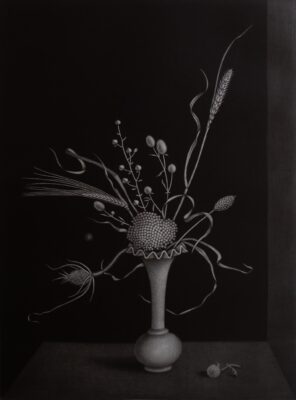Kiyoshi Hasegawa
Kiyoshi Hasegawa (1891–1980)
Kiyoshi Hasegawa is regarded as one of the founding figures of mezzotint printmaking in Japan, playing a pivotal role in introducing and promoting the technique.
As a Japanese artist who lived and worked in France, he successfully integrated the influence of Western Symbolism with the spiritual depth of Eastern art, endowing the mezzotint medium with new expressive power. In the early 20th century, Hasegawa traveled to France to study printmaking and later became a member of the Société des Peintres-Graveurs Français, an honor that reflected his distinguished status in the international printmaking community.
Hasegawa’s works often focused on natural objects and still lifes, rendered with exquisite mastery of mezzotint to capture subtle gradations of light and shadow, while imbuing his images with profound spiritual resonance. His practice went beyond representing the outward forms of objects, delving instead into the symbolic and metaphysical meanings behind them. Through this approach, mezzotint became for him not only a technique but also a philosophical language for expressing inner emotions.
Even as Europe moved into the era of Modernism—with abstraction, Expressionism, Cubism, Futurism, and other movements emphasizing subjectivity, deconstruction of form, and diverse modes of creativity—Hasegawa remained devoted to the refinement of printmaking craft, using it as a means to explore the deep connections between humanity and nature.
His works are housed in leading institutions such as the British Museum, the Bibliothèque Nationale de France, and the National Museum of Modern Art, Tokyo, underscoring his role as a cultural bridge between East and West.
Current & Recent Exhibition
Artworks

蛋白石花瓶裡的種子草
Gramineae in an Opaline Vase
美柔汀
Mezzotint
36 x 26.5 cm, 1968



 中文
中文